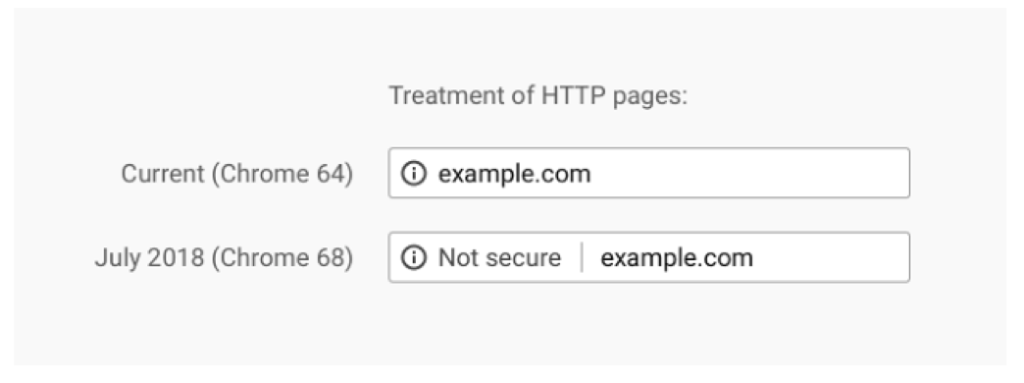On July 24, 2018, the Chrome 68 update is due to be released, and any website that has not adopted HTTPS/SSL encryption (with the green padlock by their website address) will be marked as “not secure.” Over the last year, SSL is something we’ve talked about a lot at our Meetup, and now is the time you need to add this layer of protection to your website.
Get the scoop about the Chrome 68 update, how it will impact your site if you’re not protected, and what you can do you incorporate SSL correctly.
What is the Chrome 68 Update
Google has been warning website owners for years to get SSL certificates for their sites, and this new Chrome release will clearly mark websites without them as “not secure.” Here’s an example of how unprotected sites will look in the address bar:

Since Chrome is the most popular browser, it’s necessary to install SSL for your site or Chrome can quickly weaken the integrity of your website.
What If You Wait Too Long
As you can see from the photo above, your visitors will see an immediate warning that the site they’re about to visit is not secure. While this update doesn’t mean your site is somehow instantly more vulnerable on July 25, this “not secure” warning can impact your site’s metrics, credibility, and more.
Along with the negative impact it could have on your site’s reputation, it can also put your visitors’ security and privacy at risk. Website intrusion opens the door for visitors to disclose sensitive information and create security vulnerabilities. Sites with HTTPS encrypt data on your site and keep user information protected. With the recent GDPR update, privacy protection has never been more important, and SSL will allow your site to be in line with the update.
How to Install SSL
While there are many steps to set up SSL correctly on your site, here are the basic pieces you need to work through:
- Set up an SSL certificate with your web hosting providers. This needs to be your first step and should be free with most hosts (but not in all cases). Get in touch with your host and see what steps you need to take to get a certificate ASAP.
- Update WordPress settings. If you have a WordPress website, you’ll need to redirect your HTTP site to your HTTPS site.
- Deal with mixed content issues. Mixed content issues occur when a web page contains both secure (HTTPS) and non-secure (HTTP) content. If you’re unsure where this content is, use whynopadlock.com to help you track these issues. Once you find them, you can correct them as needed. Plugins such as Better Search Replace can help with this.
- Update Google Search Console and Google Analytics. Just like your WordPress settings, you’ll need to adjust the settings for Google Search Console and Analytics. Change your preferred domain to be your HTTPS one in Search Console, and update your settings accordingly in Analytics.
We understand that this seems like a vast, timely undertaking, which is why the GreenMellen team is ready to relieve you of this stress and install SSL on your behalf. We have a tried-and-true process to successfully and quickly update your site in all the necessary places.
Don’t wait until July 24 to update your site with an SSL certificate; contact GreenMellen today and protect yourself before it’s too late!





